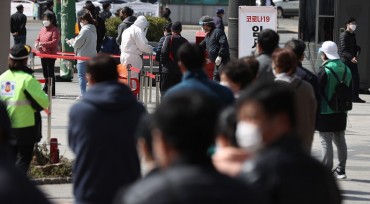
A statement, calling for ways of addressing problems caused by a shortage of doctors in rural areas and essential medical fields, is attached to a public medical institution in Seoul on Feb. 22, 2024. (Image courtesy of Yonhap)
SEOUL, Feb. 23 (Korea Bizwire) — Nearly 80 percent of trainee doctors nationwide have submitted resignations and over 7,800 doctors walked off the job to protest a plan to raise the medical school enrollment quota, leading to the government’s issuance of the highest health alert amid an exacerbating medical system crisis.
Intern and resident doctors in major general hospitals nationwide have taken collective action for a fourth day as they oppose the government’s plan to admit 2,000 more students to medical schools next year from the current 3,058 seats to address a shortage of doctors.
As of Thursday night, 8,897 trainee doctors from 94 major hospitals in Seoul and elsewhere, or 78.5 percent of their junior doctors, have submitted their resignations, and 7,863 of them have not turned up to work, according to the health ministry.
The latest figure marked a slight fall from the previous day’s reading, but that does not mean that doctors have returned to work as the government was forced to exclude six hospitals from the tally due to insufficient data.
The government received an additional 40 complaints from patients and others regarding the ongoing walkout, bringing the total such reports to 189.
South Korea has around 13,000 trainee doctors across the country, and their role is crucial in emergency and acute health care duties.
In response to growing strain on the medical system, the government on Friday jacked up the state four-scale crisis warning to the highest level of “serious,” and implemented a set of measures by mobilizing all ministries concerned and resources available to cope with the situation.
Telemedicine services will be available from all hospitals starting on the day and the government vowed to provide financial support to hospitals for hiring more temporary workers.
It will maximize the use of public medical institutions by extending their operating hours on weekdays to the maximum and expanding weekend and holiday services.
Four additional situation rooms responsible for transporting severely ill emergency patients will be established by early next month.
The Seoul municipal government and other provincial governments established a disaster safety management team of their own for responses.
It was the first time that the government activated such top-level protocols due to a medical service issue.
(Yonhap)






